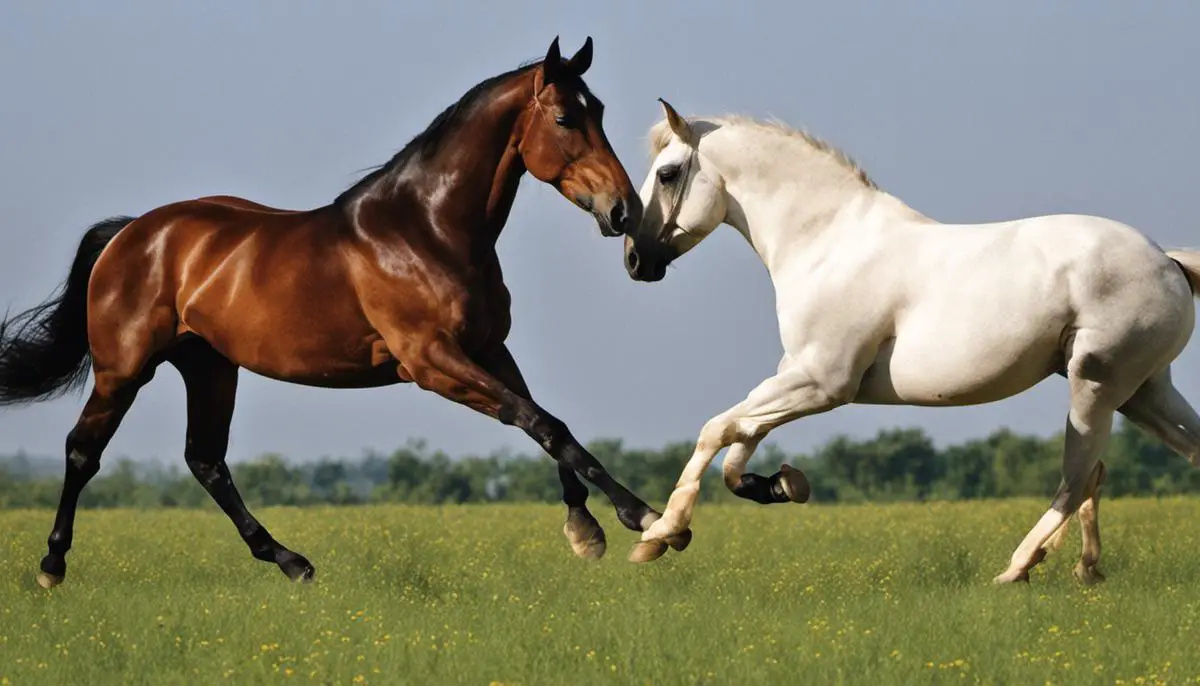The Hungarian Sport Horse, a breed that epitomizes the blend of elegance, strength, and agility, holds a vast and rich history within Hungary’s illustrious equestrian tradition. Originating from a culture bound tightly to the dynamics of horse breeding, this breed represents a vital part of Hungarian civilization. Embodied within this equine masterwork are compelling stories of evolution put to the test of time, nature, and human creativity. The discussion offers us a chance to delve into the fascinating historical development of the Hungarian Sport Horse, its remarkable physical attributes, commendable performances in competition, and the means to their meticulous care and training.
Table of Contents (Horspedia)
History of the Hungarian Sport Horse
Origins and Early Years of the Hungarian Sport Horse
The Hungarian sport horse traces its origins to the amalgamation of various horse breeds in Hungary. Hungary’s fertile plains provided an ideal setting for horse breeding since ancient times, with the early Magyars recognized for their equine expertise. Over the centuries, Hungary became known for its versatile horses that excelled in both agricultural work and warfare.
The Evolution of the Hungarian Sport Horse
The Hungarian Sport Horse, as we know it today, evolved in response to changing needs and demands. The breed was developed with an emphasis on creating a versatile, athletic horse capable of performing at various equestrian sports, from dressage to jumping. The breed’s foundation stock primarily consists of Furioso, Gidran, Kisber Felver, and the native Nonius lines. Crossbreeding with Thoroughbreds, Arabians, and Warmbloods has enhanced its agility and temperament.
Key Characteristics of the Hungarian Sport Horse
The Hungarian Sport Horse is known for its athletic prowess, versatility, and unflinching courage. Typically standing between 15.2 and 17 hands tall, these horses exhibit a well-muscled build with powerful hindquarters and a deep, broad chest. They are adaptable animals, thriving in diverse conditions, and are renowned for their resilience and endurance – traits that were of great importance during their historical roles in warfare and agriculture.
Role of Horse Breeding in Hungary
Horse breeding has always been an integral part of Hungarian culture and society. Hungary’s history is interwoven with horses, from the Magyars’ early equine-centered culture to the prestige of Hungary’s state stud farms in the 18th and 19th centuries. The country’s reputation as a horse breeding nation was further enhanced by the development of the Hungarian Sport Horse. The importance of horse breeding extended beyond agriculture and warfare, contributing to Hungary’s socio-economic development, specifically in rural areas.
Significant Role of the Hungarian Sport Horse in Hungary
The Hungarian Sport Horse played an essential role in Hungarian society, especially during the times of the Austro-Hungarian Empire. Highly valued for their endurance, reliability, and keen intelligence, they were used extensively in cavalry units, agriculture, and transportation. Today, the Hungarian Sport Horse continues to play a significant role in equestrian pursuits, proving itself an outstanding performer at the highest levels of competition.
An Introduction to the Hungarian Sport Horse
Hungary’s longstanding and passionate commitment to equestrian success is reflected in their versatility and distinctive characteristics of the Hungarian Sport Horse, a breed which thrives in the competitive arena of modern equestrian disciplines, including international dressage, jumping, and eventing. This breed’s qualities are meticulously preserved by the Hungarian Sport Horse Breeders’ Association, whose aim is to ensure the breed’s excellence worldwide and uphold their country’s highly respected equine heritage.
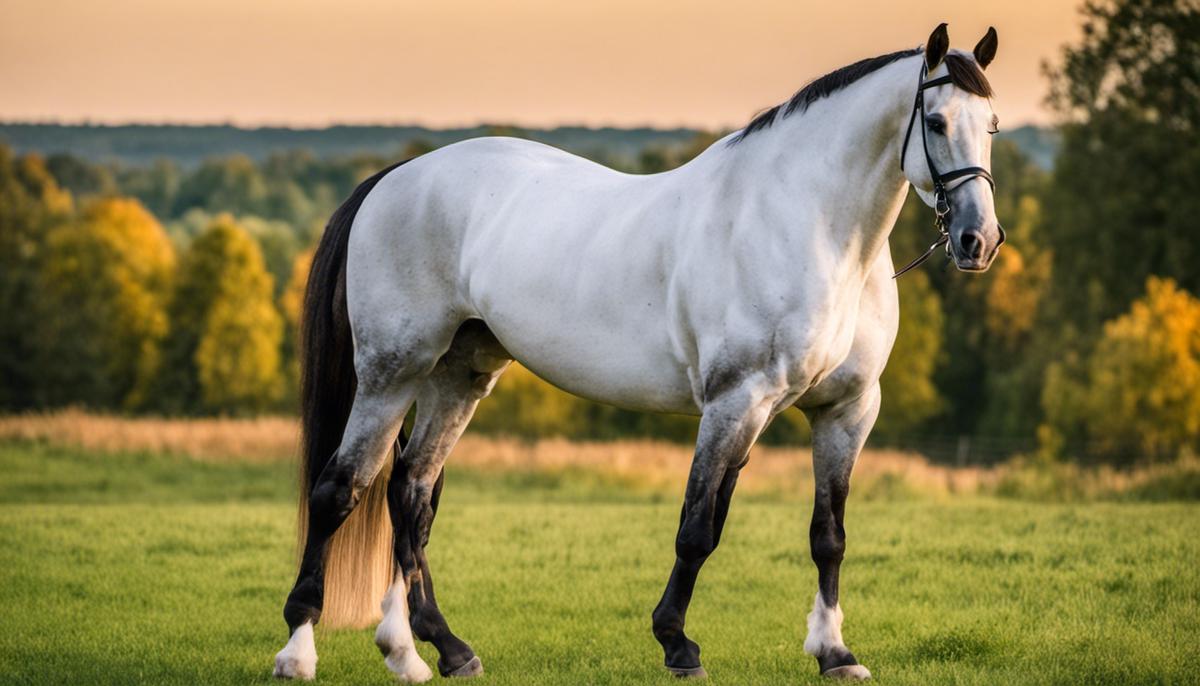
Characteristics and Physical Attributes
The Appearance and Traits of the Hungarian Sport Horse
The Hungarian Sport Horse, often called the Hungarian Warmblood, typically measures between 15.3 and 17 hands high. This range in size is suitable for both mature and younger riders. They are muscular, yet have a light weight, falling within the 1,000 to 1,300-pound range. Despite their athletic build, these horses exude an air of grace and agility.
Their coats can show a variety of colors, ranging from bay to black, gray, chestnut, and even pinto on occasion. One can identify a Hungarian Sport Horse by their well-balanced features; they have a proportionate head, a sturdy neck, and a capacious chest. Their powerful hindquarters, a key feature, contribute significantly to their reputation as outstanding performance horses.
Behavior and Temperament
The Hungarian Sport Horse is known for its gentle temperament and good-natured characteristics. These horses are highly intelligent and display a willing disposition. They are easy to handle and train, making them popular both among expert riders and with those new to equestrian sports.
Hungarian Sport Horses are not only poised and calm but also energetic and versatile. This balance of energy and tranquility makes them ideal for a variety of equestrian disciplines.
Speed and Agility
The Hungarian Sport Horse demonstrates exceptional speed and agility. This breed is noted for its energetic yet controlled gaits that exhibit grace and power. The breed’s excellent jumping ability is particularly appreciated, hence their presence in disciplines such as show jumping and eventing.
With a natural and smooth stride, these horses are also suited for dressage. Their agility, combined with their physical strength and balanced movement, allows them to excel in competitive sporting events.
Outstanding Features and Variants
One of the unique features of the Hungarian Sport Horse is their versatility. They efficiently participate in a range of sports including eventing, show jumping, dressage, and driving. Their physical prowess, coupled with their trainable nature and adaptable personalities, make them a popular choice across diverse equestrian disciplines.
The Hungarian Sport Horse is a variant of the Hungarian Warmblood. There are two more variants – Shagya and Gidran. Shagya is characterized by a stable temperament and endurance while the Gidran is known for its speed, making it ideal for horse racing.
An Introduction
The Hungarian Sport Horse, prized for its athleticism, versatility, and intelligence, is a popular choice amongst horse riders worldwide. With their agreeable temperament and remarkable adaptability to a diverse array of equestrian sports, these horses have become a favorite for many equine enthusiasts.
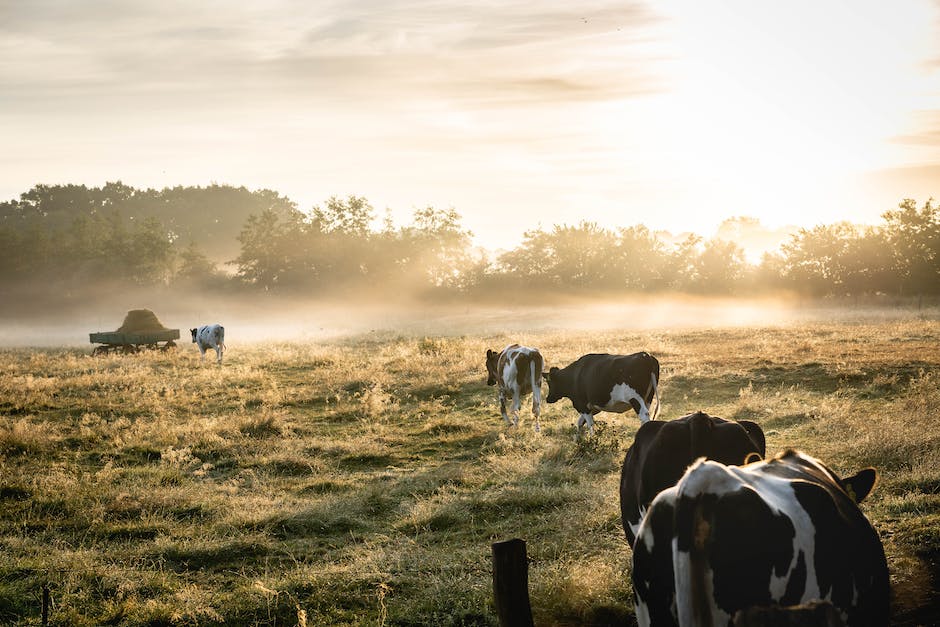
Hungarian Sport Horse in Competition
A Snapshot of Their History and Origins
Also known as the Magyar Sportló, the Hungarian Sport Horse is a product of careful breeding between native Hungarian breeds and various European breeds. Their athletic build and versatility were prioritized during selective breeding, resulting in a breed perfectly suited for competitive equestrian sports. The breed received official recognition late in the 20th century, and its popularity has since been on the rise due to its endurance, agility, and willing nature.
Characteristics and Temperament
Hungarian Sport Horses usually stand at around 16 to 17 hands high. Their build tends to lean towards warmblood characteristics, with a solid and strong body, broad chest, and powerful hindquarters. Despite their size, they are surprisingly agile and quick, making them excellent competitors in various equestrian events. One of the key characteristics of this breed is their exceptional temperament. Known for being intelligent, willing, and easy to train, they offer both advanced and novice riders a fantastic ride.
Cultural and Historical Impact
In Hungary and beyond, these horses have been deeply linked with the nation’s culture and history. The power, speed, and agility of the Hungarian Sport Horse made it a key element in Hungary’s traditional equestrian sports. Even today, the respect and recognition for this breed are ingrained in Hungarian culture.
Performance in Equestrian Sports
In terms of performance, the Hungarian Sport Horse breeds stand out in endurance races, dressage, eventing and show jumping. Their powerful build enables them to take on rigorous courses with seeming ease. The ease they display while performing intricate dressage movements or leaping over formidable obstacles is testament to their athleticism and training.
Role in International Sports
On an international scale, Hungarian Sport Horses have left a mark in various equestrian events. They are known to compete and often excel in prestigious events, such as the Olympic Games and World Equestrian Games. Their presence in these international competitions not only brings honor and recognition to their home country but also highlights the calibre of these magnificent horses.
Why They Excel in Equestrian Sports
There are many factors that contribute to the success of the Hungarian Sport Horse in competitive sports. Their strong physique, combined with their fierce determination and intelligence, makes them suitable for the demanding nature of equestrian sports. Moreover, the training methods employed by Hungarian breeders and trainers are designed to hone these traits from a young age, preparing the horses for the intensity of competitive sports. Another key factor to their success in these sports is their versatility. Whether it’s dressage, jumping, or eventing, the versatility of these horses enables them to adapt and excel in different disciplines.
Future of Hungarian Sport Horses
International equestrian enthusiasts continue to show interest in the breeding and training of Hungarian Sport Horses. This interest is sparked by the breed’s versatility and track record in equestrian sports, as well as their superb temperament and willingness to work. These characteristics have won the breed a cherished place in sports arenas and in the hearts of equestrian lovings. In order to ensure the breed’s survival and prosperity, preservation and conservation initiatives are in place.
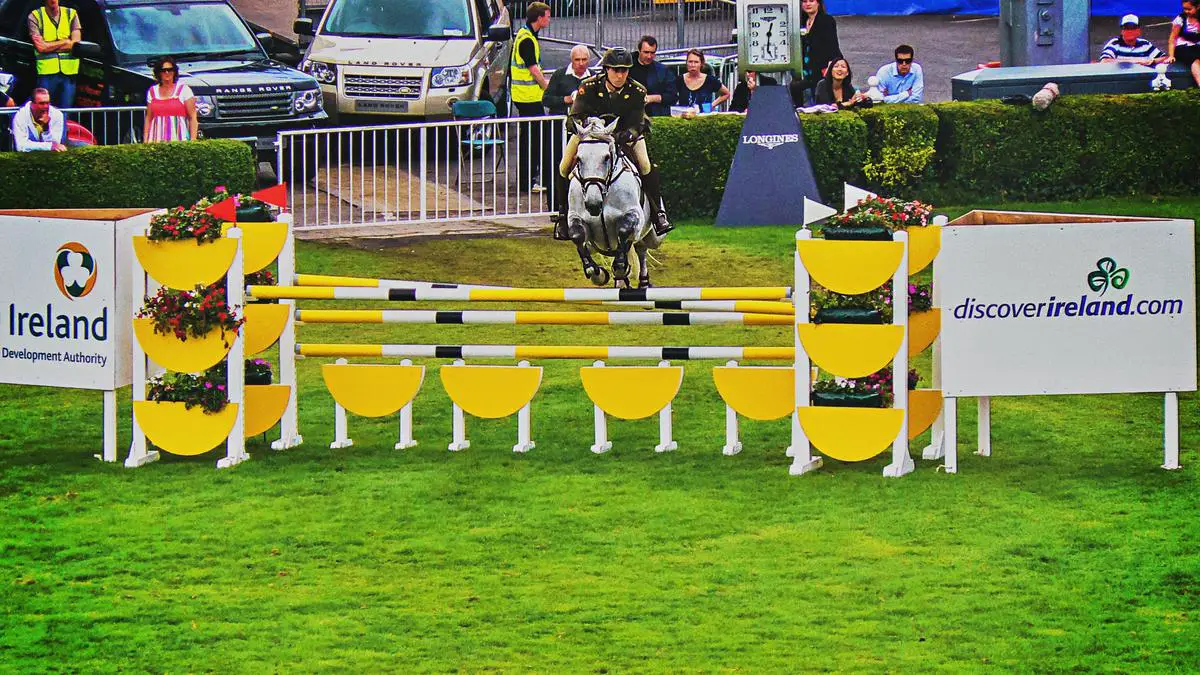
Photo by kmitchhodge on Unsplash
Care and Training
The History of Hungarian Sport Horses
Known alternatively as Hungarian Warmbloods, Hungarian Sport Horses were specifically bred for their athletic abilities and versatility. The breed, whose lineage stretches back to the mid 16th century, was meticulously crafted by introducing diverse European bloodlines. These included Thoroughbreds, Arabians, and other Warmbloods, which all contributed to enhance the breed’s endurance, speed, and stability. Hungarian Sport Horses are mainly seen in showjumping, dressage, and eventing arenas, however, they are just as well-suited to subdued activities, such as trail riding, thanks to their calm disposition.
Characteristics
The typical Hungarian Sport Horse exemplifies classic warmblood traits – standing between 15 to 16 hands high, with a robust build, a lively, elegant gait, and a reputation for both stamina and speed. They have a well-proportioned head, defined wither, strong shoulder slope, and a muscular back. This breed is renowned for their courage, willingness, and intelligent temperament, making them excellent partners in a variety of equestrian sports.
Diet and Exercise
Nutritionally, the Hungarian Sport Horse requires a diet similar to that of other active, athletic breeds. This generally would encompass a combination of good quality forage, fortified grains, and the provision of a balanced multivitamin-mineral supplement as needed. Regular access to fresh drinking water and free-choice mineralized salt is also essential. Their diet should be adjusted based on their age, level of activity, health status, and metabolic efficiency.
In terms of exercise, these horses thrive on regular moderate to intense work. As a sport horse breed, frequent exercise not only maintains physical condition but also sharpens their mental agility. They do well with a variety of work, including flatwork, jumping exercises, as well as cross-training in fields and trails for mental stimulation and cardiovascular fitness.
Healthcare
Like all horses, Hungarian Sport Horses necessitate comprehensive preventative healthcare measures. This includes regular vaccinations, periodic deworming, frequent hoof care, and dental checkups. The services of a professional equine veterinarian and farrier should be enlisted to maintain their optimal health status. It’s crucial to remember that these horses can be prone to certain health conditions, including lameness issues, so maintaining a proactive health regimen is paramount.
Training Techniques
Hungarian Sport Horses are reputed for their agility, speed, and power, which makes them excellent performers in various equestrian sports. However, attaining such high-performance levels requires a well-planned training regimen built on trust and respect. A balanced approach combining groundwork exercises, lunging, flatwork schooling, jumping, cross-training and providing sufficient rest periods yields the best results.
Progressive reinforcement training, focusing on rewarding good behavior, is particularly successful with this breed. It helps not only in instilling basic manners and obedience but also in developing sophisticated skills required for showjumping, dressage, or eventing.
The Joy of Owning Hungarian Sport Horses
Being an owner and trainer of a Hungarian Sport Horse can present a highly gratifying experience considering their sporty versatility, eager participation, and lively disposition. Through a balanced diet, consistent exercise, holistic healthcare approach, and systematic training approach, Hungarian Sport Horses have the ability to excel in a plethora of sporting activities while maintaining overall health and wellness.

Present Day Hungarian Sport Horse
The Prominence of Hungarian Sport Horses Today
Today, Hungarian Sport Horses are acknowledged for their unmatched athleticism, equilibrium, and stamina, securing a highly regarded status in the field of equestrian activities. They mainly participate in showjumping, dressage, and multiple-day trail rides. These horses showcase versatility across different disciplines, demonstrating their endurance, flexibility, and sportsmanship. The adaptable nature of this breed enables them to compete and set benchmarks at top international equestrian competitions, standing testament to the breed’s superiority amongst other pedigrees.
Evolution of the Breed
The Hungarian Sport Horse is a result of meticulous and planned crossbreeding that took place in the 19th century. The initial breeding stock was primarily composed of indigenous Hungarian breeds, which were then crossed with English Thoroughbreds, Arabians, and Warmbloods to produce the current Hungarian Sport Horse. The goal was to create a breed with the power, speed, and endurance necessary to excel in demanding equestrian sports. This breeding program resulted in a versatile horse with a strong build, agile movements, and an outstanding jumping ability, essential traits for a sports horse.
Mating Procedures
Breeders of Hungarian Sports horses today employ a specific mating procedure that aims to maintain and improve the breed’s quality. Stallion selection is crucial, with horses often chosen for their athletic prowess, temperament, and health status. Breeding mares are selected based on their conformation, pedigree, and sport performance. Emphasis is also placed on genetic health, with thorough screening to avoid passing on harmful genetic conditions. Embryo transfer is increasingly being used to allow top-performing mares to continue competing while also contributing to the gene pool.
Challenges Faced
Despite their impressive qualities, Hungarian Sport Horses face several challenges. Breeding high-quality Hungarian Sport Horses is an expensive endeavor, with costs including veterinary care, training, and competition fees. In addition, smaller population size compared to more widespread breeds can limit genetic diversity and pose challenges to improving the breed further.
International Recognition
Hungarian Sport Horses have gained international recognition for their performance in various equestrian disciplines. They have been exported to multiple countries, including the United States, Germany, and Italy, where they continue to perform well in competitive and leisure riding. Despite this, efforts to increase the breed’s popularity globally are ongoing, with initiatives aimed at marketing and educating equestrians about the unique benefits of owning a Hungarian Sport Horse.
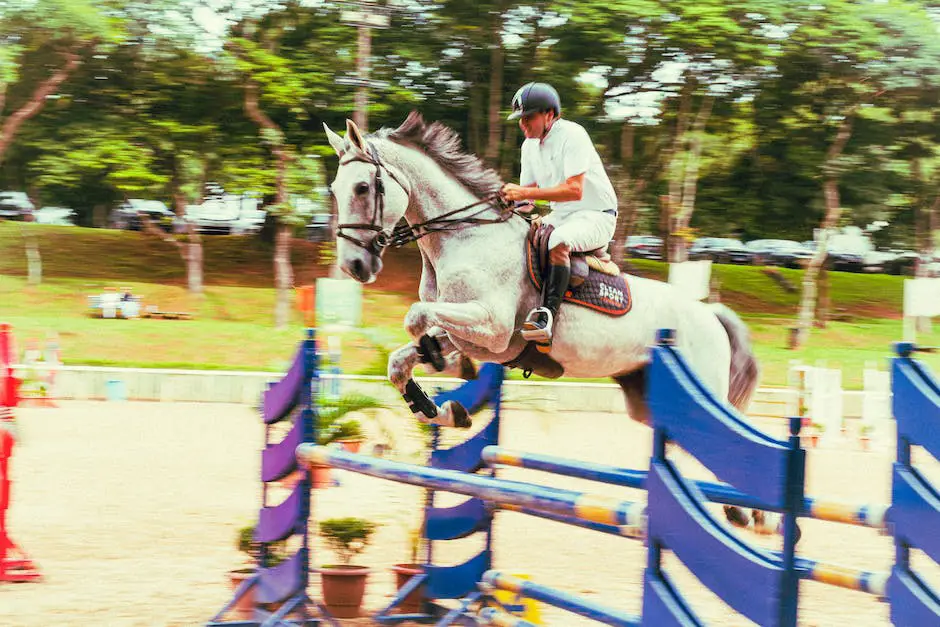
When we glance at the present-day scenario of the Hungarian Sport Horse, we find a breed that has stood the tests of time, maintaining its unique characteristics while evolving to meet the needs of the modern equestrian world. These horses continue to prove their merit in various equestrian sports, their place on the podium a testament to their speed, strength, and agility. The breed’s recognition in different nations speaks volumes about its versatility and resilience. Despite challenges, the Hungarian Sport Horse continues to thrive, graciously bearing the testimonies of its age-old lineage, and providing future generations with the opportunity to experience the blend of magnificence and vigor that they inherently possess.
